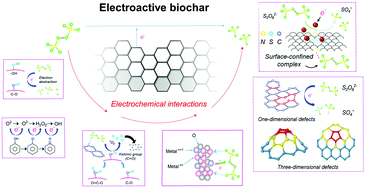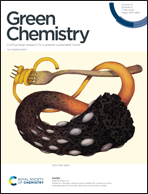Sustainable remediation with an electroactive biochar system: mechanisms and perspectives
Abstract
Biochar functionalized with electroactive components is gaining increasing attention owing to its versatile redox roles and tuneable structural configurations. In this review, we summarise and highlight the electrochemical properties of biochar with various theoretical, methodological, and experimental approaches, and offer new perspectives on electrochemical carbocatalysis of biochar to guide future environmental applications. Electrochemical carbocatalysis is for the first time correlated with the synergistic effects among reactive-active moieties, metal contents, defective sites, heteroatom doping, and conductive graphitic surfaces within a manoeuvrable biochar framework for environmental interactions involving biochar. It is worth noting that milder redox reactions including the formation of surface-confined reactive complexes, singlet oxygenation, and direct electron transfer can be properly introduced with specific protocols, thus minimizing undesirable carbon oxidation and enhancing reaction sustainability. Overall, this review presents future research directions on the mechanistic aspects of electroactive components on biochar to facilitate its applications in sustainable carbocatalysis and green chemistry.



 Please wait while we load your content...
Please wait while we load your content...